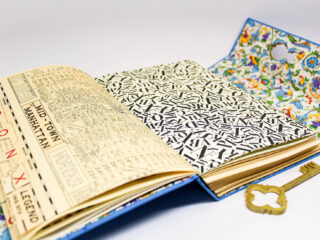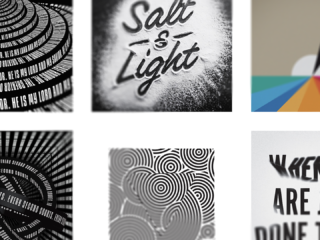Admittedly this is a subject I haven’t always succeeded at but, I feel that my failures have given me the lessons needed to share these thoughts.
In the graphic design industry, creativity is just one of many necessary attributes. To truly succeed, designers must master the delicate balance between time management and handling pressure. This is not just a professional necessity; it is also an essential skill set that should be deeply embedded in any comprehensive graphic design curriculum. However, in doing so, educators must also maintain a close watch on student mental health, ensuring that the pursuit of rigor does not come at the expense of a student’s well-being.
Time Management and Graphic Design
Time is the most valuable resource for any designer. Of all resources it is the one that is finite and without substitution. The process of creating a compelling and successful design requires not only talent and technical skills (see 10 Minutes for reasons why staying up to date on technical skills is important) but also the ability to work within tight deadlines. Time management in graphic design goes beyond merely meeting deadlines. it’s about organizing tasks, prioritizing work, and allocating enough time for brainstorming, iteration, and refinement.
In a real-world setting, graphic designers often juggle multiple projects simultaneously. Without effective time management skills, even the most talented designers can find themselves overwhelmed, leading to burnout, procrastination, or just downright terrible work. Teaching time management in a design curriculum not only helps students pace themselves and allocate their creative energy efficiently but also equips them with strategies to combat procrastination. By learning how to break tasks into manageable steps and prioritize effectively, students can overcome the urge to delay work, ensuring they consistently meet expectations and deliver high-quality results. (more on this in future posts on teaching a “design process”)
Pressure and Graphic Design
Pressure is part of the job, whether from a demanding client or a tight deadline. How a designer handles this pressure can define their career. But this isn’t just a challenge faced in the professional world, students too, deal with pressure as they balance coursework, meet project deadlines, and strive to create portfolio worthy work. Learning to manage this pressure early builds the resilience and adaptability needed for success. However, pressure management must be taught in a balanced way that recognizes the toll prolonged stress can take, emphasizing both resilience and mental health awareness.
Managing pressure effectively is about staying calm, maintaining focus, and using stress as a motivator rather than an obstacle. When students and designers learn to thrive under pressure, they become more resilient and adaptable, both of which are essential traits in a field that is constantly evolving.
Maintaining Rigor Without Sacrificing Mental Health
One of the greatest challenges in education is maintaining academic rigor while also ensuring the mental well-being of students. In graphic design, where deadlines and creative demands can be intense, it is crucial to strike this balance.
- Creating a Supportive Environment: Establish a classroom culture that encourages a community of open communication about stress and mental health. Students should feel comfortable discussing their challenges and seeking help. This can be facilitated through regular check-ins at the beginning of class or at the end of a big project.
- Clear Expectations: While deadlines are important, offering some flexibility on expectations that takes into account a quick deadline can help students manage their stress more effectively without compromising their mental health. Clear communication about expectations and the reasoning behind deadlines can also alleviate unnecessary stress.
- Community Based Project-Based Learning: While project-based learning is an excellent way to teach time and pressure management, it should be designed to promote both rigor and well-being through community. Projects should be challenging but also provide opportunities for reflection, peer support, and community or informal feedback (I call this my visual armory exercises), which can reduce the pressure to get things “perfect” on the first try and allow for more in-class dialogue.
- Integrating Mental Health Into Their Education: Just as students learn about typography or color theory, they should also receive education on mental health and self-care strategies. This can include lectures or even short discussions on stress management, mindfulness techniques, and the importance of work-life balance (I have often assigned “rest” to students). Bringing in guest speakers or professionals who are able to be vulnerable and discuss their mental health can also provide students with practical tools, resources, and give them someone to whom they can identify with.
- Monitoring Workload and Stress Levels: Educators should be vigilant about the workload assigned to students, ensuring it is challenging but not so overwhelming that it is crippling. Regularly monitoring stress levels through discussions, one on one conversations, or even surveys can help educators make necessary adjustments to maintain a healthy balance between rigor and mental health.
The Long-Term Benefits
By integrating time and pressure management into graphic design education, while keeping a close eye on student mental health, educators can prepare students for the realities of the design industry. These skills go beyond the classroom, equipping students to manage the demands of their professional lives without sacrificing their well-being. A curriculum that balances rigor with mental health will produce not only creative and talented designers but resilient professionals ready to succeed in their careers.
Conclusion
By integrating time and pressure management into design education, while keeping a close watch on student mental health, educators can prepare students for the realities of the industry. These skills are not just academic, they are life skills that enable students to navigate the complexities of a professional life without sacrificing their well-being and personal life. As students learn to manage their time, handle pressure, and prioritize their mental health, they become more than just competent designers, they become resilient, adaptable professionals ready to thrive in this ever-evolving industry.
A curriculum that emphasizes both a high rigor and well-being creates an environment where students can explore their creativity, push their boundaries, and develop a sustainable approach to their future careers. In addition, by making this environment community-based students will be able to have greater support for their mental health. This balance ensures that students enter the workforce not just as skilled designers but as well-rounded individuals who are prepared to face the challenges of the design industry with confidence.
Ultimately, by fostering a supportive and challenging educational environment, we equip students with the tools they need to succeed in the long term. They learn not only how to manage projects and meet deadlines but also how to care for themselves and maintain a work-life balance, which are essential skills for a fulfilling and enduring career.




